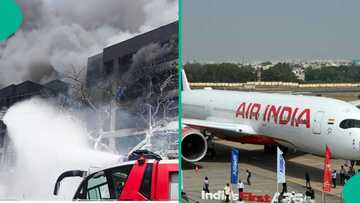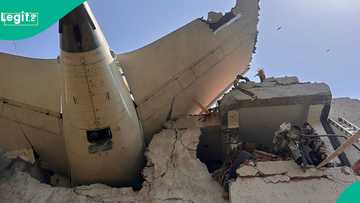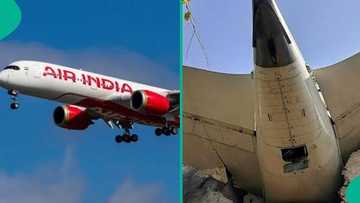Aviation Expert Explains Pilot's Alleged Mistake That May Have Caused Deadly Air India Crash
- A tragic error during takeoff allegedly led to the devastating crash of Air India flight AI171, killing all but one of the 242 people onboard
- Aviation expert Captain Steve believes a simple misstep with operation of the landing gear may have caused the aircraft to lose control
- The airliner crashed into a medical college in Ahmedabad, marking the worst aviation disaster India witnessed in around a decade
Air India flight AI171 crashed just after takeoff on June 12, 2025, killing all but one of the 242 passengers onboard.
The aircraft, which was bound for London, tragically went down after an alleged fatal mistake during takeoff.
In response, assistance centres have been set up at Gatwick and other airports to support grieving friends and relatives.

Source: Getty Images
Fatal mistake behind AI171 disaster, expert claims
According to aviation expert Captain Steve, a crucial error during the flight's takeoff may have caused the devastating crash.
He said the co-pilot reportedly raised the wing flaps instead of retracting the landing gear; a simple yet catastrophic mistake.
"This explains a lot of why this airplane stopped flying," Steve said, adding that the error would have led to an immediate loss of airspeed and altitude, making it nearly impossible for the pilots to recover control.
Factual cause of India air crash unknown
Legit.ng notes that Captain Steve's claim of error causing the crash remains speculative as investigations into the disaster are still ongoing.
Determining the cause of an air crash is a painstaking process led by aviation authorities and governed by international protocols.
The process, often spanning several months, begins at the crash site and ends with a publicly released final report outlining causes and safety recommendations.
Under global rules set by the International Civil Aviation Organisation (ICAO), the country where the crash occurred leads the investigation, often in collaboration with the aircraft’s manufacturer, the airline’s home country, and other relevant parties.
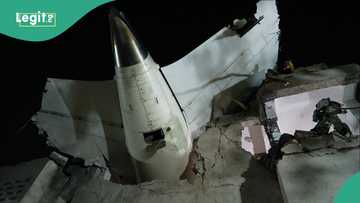
Read also
University professor speaks on possible cause of Air India plane crash that killed hundreds of people
In high-profile accidents, agencies like the US National Transportation Safety Board (NTSB) or France’s BEA may dispatch teams to assist.
Air India crash: what happens next
Investigators begin by securing the crash site and collecting vital data, including wreckage patterns, weather reports, maintenance logs, and air traffic communications.
The retrieval of flight recorders, commonly known as black boxes, is considered a top priority as these devices record cockpit conversations and performance data that are crucial to reconstructing the final moments of the flight.
Experts from various fields, including aeronautical engineering, human factors, and meteorology, analyse the collected evidence to determine the chain of events that led to the accident.
Investigations typically highlight a combination of causes, which may include mechanical failures, human error, poor weather, or systemic lapses in training or oversight.
Once a draft report is completed, it is circulated among stakeholders for comments before a final report is then released, detailing the probable cause and recommending safety measures to prevent similar incidents.
These recommendations often result in changes to aircraft design, maintenance procedures, or pilot training standards.
Flight AI171 crashes into Indian medical college
In a rare Indian air tragedy, the Boeing 787 Dreamliner aircraft crashed into a medical college in Ahmedabad marking the world's worst aviation disaster in a decade.
Eyewitness footage of the crash reportedly shows the wings failing to bend as they normally would during takeoff - a detail that could support Captain Steve's theory.
Assistance centres provide support
In the wake of this devastating accident, assistance centres have been set up at London Gatwick and other airports to help friends and relatives of the victims cope with their loss.
Authorities continue to investigate the incident to determine the exact sequence of events leading up to the crash. More details are expected to emerge in weeks and months to come.
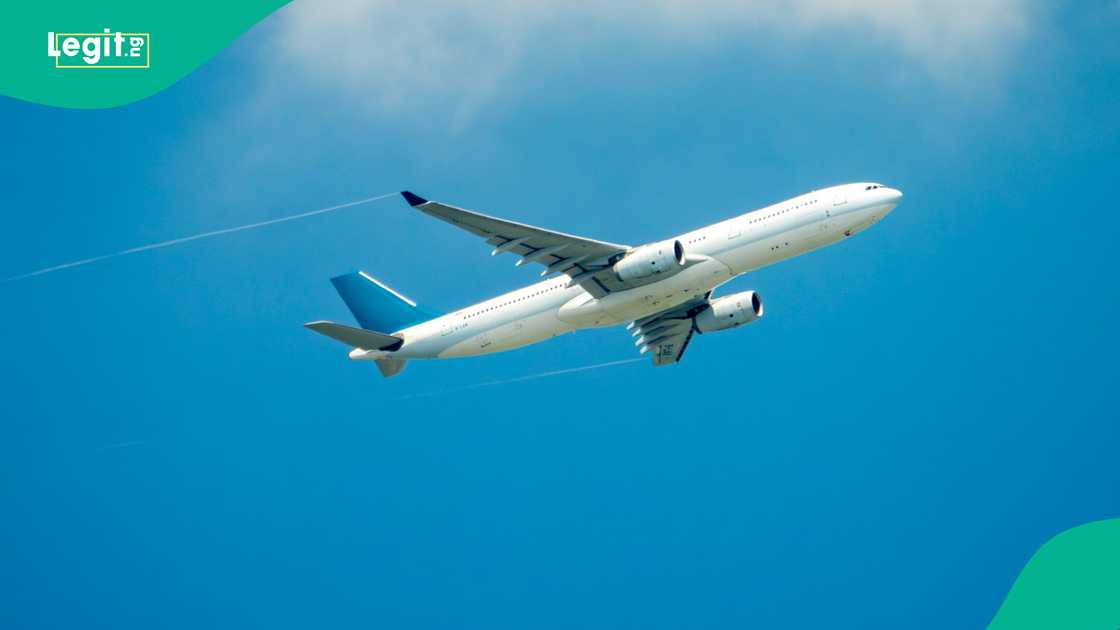
Source: Getty Images
Flap misconfiguration not detectable from tower - Expert

Read also
Air India crash: Investigation takes new turn as experts find recorder containing pilot's last chat
Following the tragic Air India crash reportedly caused by flap misconfiguration, aviation expert and air traffic controller Promise Orolisen weighed in on the limits of air traffic control in such situations.
“In cases involving flap misconfiguration, it's crucial to identify whether it was a pilot training issue, procedural lapse, or other underlying factors,” Orolisen told Legit.ng.
He clarified that such cockpit-related errors fall outside the operational responsibilities of controllers.
“Air traffic control typically can’t directly detect a pilot mistake like flap misconfiguration before liftoff, as their primary role is to manage airspace and provide separation, guidance and information to aircraft. Therefore, it's beyond the operational scope of ATC.”
Other plane crash in India
India has experienced multiple tragic plane crashes over the years. The Charkhi Dadri mid-air collision in 1996 claimed 349 lives, making it the deadliest aviation accident in the country.
The 1985 Kanishka bombing saw Air India Flight 182 explode mid-air, killing 329 people. In 2010, Air India Express Flight 812 overshot Bangalore's tabletop runway, resulting in 158 fatalities.
The Kozhikode crash in 2020 killed 21 when a repatriation flight skidded off the runway. Other incidents, such as the Mumbai crash of 1978 have helped shape India’s aviation safety protocols.
Airplane carrying 200 passengers crashes
Legit.ng earlier reported that a London-bound Air India flight crashed shortly after taking off from Ahmedabad, western India, with more than 200 passengers onboard.
The airline confirmed the crash, stating that Flight AI171 bound for London Gatwick had gone down, with reports suggesting only one person had survived the crash.
Legit.ng's head of politics and current affairs desk, Nurudeen Lawal, contributed an explainer on how the cause of an air crash is determined to this report.
Editorial assistant Ololade Olatimehin provided exclusive commentary from an ATC expert for this report.
Proofreading by Bruce Douglas, copy editor at Legit.ng.
Source: Legit.ng

Basit Jamiu (Current Affairs and Politics Editor) Basit Jamiu is a journalist with more than five years of experience. He is a current affairs and politics editor at Legit.ng. He holds a bachelor's degree from Ekiti State University (2018). Basit previously worked as a staff writer at Ikeja Bird (2022), Associate Editor at Prime Progress (2022), and Staff Writer at The Movee (2018). He is a 2024 Open Climate Fellow (West Africa), 2023 MTN Media Fellow, OCRP Fellow at ICIR, and Accountability Fellow at CJID. Email: basit.jamiu@corp.legit.ng.

Promise Orolisen (Astrophysicist) A seasoned physicist specializing in astrophysics, with expertise in data analysis and research design. Recently conducted research on total lunar eclipses at Rivers State University. Experienced in air traffic control during an internship at Nigeria Airspace Management Agency, Port Harcourt International Airport. Former tech industry professional at Hi-Sense Computers (2021-2022). Holds a Bachelor's degree in Astrophysics from Rivers State University (2023). Member of Pan Africa Citizen Science E-Lab and participant in the 2024 Sagan Summer Workshop. Certified in HSE levels 1, 2, and 3.


